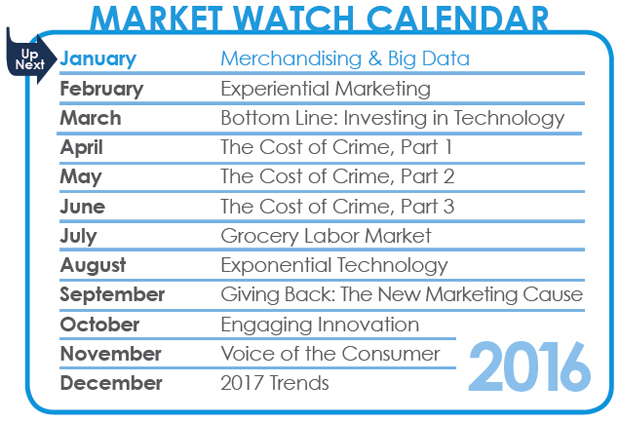By Retail News Insider
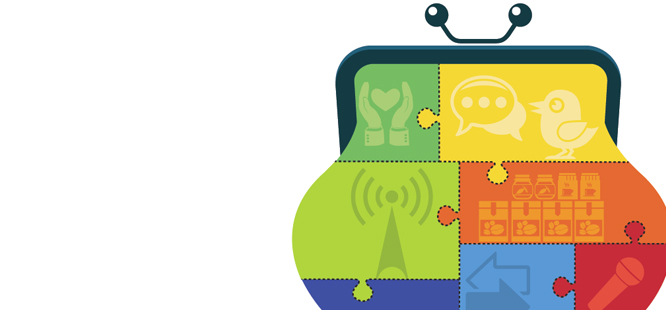
New technologies, new products, new consumer preferences— change always threatens to disrupt the status quo, and the retail landscape is no different. The trick is to determine which trends are passing fads and which have real staying power. To help, we asked six experts from the Daymon Worldwide family of companies to share their predictions for trends that will have the biggest impact on the U.S. retail environment in 2016.
Improved Transparency and Distribution
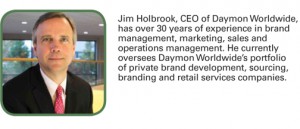 According Jim Holbrook, CEO of Daymon Worldwide, one of the biggest themes in retail in 2016 will be “‘less bad, more good.’ That is, we’ll see more products introduced with less sugar, less salt, less words you can’t pronounce, less GMOs and so on. CPGs will also be focused on providing products with more nutrition, more flavor and more simple ingredients. This is going to continue to accelerate across all categories.”
According Jim Holbrook, CEO of Daymon Worldwide, one of the biggest themes in retail in 2016 will be “‘less bad, more good.’ That is, we’ll see more products introduced with less sugar, less salt, less words you can’t pronounce, less GMOs and so on. CPGs will also be focused on providing products with more nutrition, more flavor and more simple ingredients. This is going to continue to accelerate across all categories.”
Holbrook is quick to note that this isn’t simply a matter of CPGs wanting to help improve nutrition. “What’s really happening here is there is a shift in trust away from brands and companies and onto other consumers and people they know. The Internet and social media are huge facilitators for that, as are Millennials. They have a far different trust hierarchy than previous generations. While they may be willing to rent out their living room or an extra bedroom to strangers [through a service like Airbnb], they don’t trust a product when they can’t pronounce the ingredients.”
Beyond the shelf, Holbrook also predicts changes in distribution. “Availability and accessibility of products will also change dramatically,” he says. “There’s a changing landscape of formats—for example, Walmart is testing out online ordering combined with in-store pickup and Amazon just announced they are opening a physical bookstore. Retailers are heading in the direction of covering all points of distribution.”
As for the rise of e-commerce options, “it’s not that people will stop going into the store to see what’s available,” Holbrook explains. “It’s that they want choices and an improved experience. For example, we might see a service where you can preorder your staples, then pull up to the store and have your paper towels, diapers, laundry detergent and so on loaded into the back of your car while you go inside to pick out more interesting items.”
Closing the Digital Divide
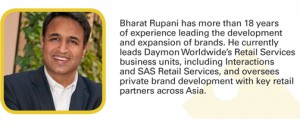
“The digital shift will continue to be a major player in retail in 2016,” says Bharat Rupani, President of Interactions and SAS Retail Services. As evidenced by the expansion of online retailers and falling brick-and-mortar market share in 2015, “brick-and-mortar retailers need to find better ways to effectively compete in the digital space.”
According to Rupani, one way some retailers will do this in 2016 is by starting to engage with consumers well before they enter the store. “Today, brands are engaging with consumers through apps and other digital interactions before they ever enter the store. In the coming year, retailers will want to embrace technology and figure out how to get engaged with a digital audience. Shoppers want to feel like they are having a personal experience with retailers, and technology can help make that happen by being available everywhere a shopper is: in person, on their mobile device, through an app, and so on.”
Rupani also predicts that technology will be used in new ways to enhance the in-store experience. For example, “when you sample a product in store today, it is likely with a Sales Advisor and the product. The product demo of the future will include technology to give a more dynamic experience to the shopper, while collecting vital information for the retailer and brand to make the shopping trip a more personalized experience.”
Technology is becoming engrained in our culture and Rupani predicts, “Consumers will continue to demand connectivity through technology; they want ease of use and information at their fingertips. The expectation has been set, now retailers have to meet it.”
Retailers Take More Control of Shelves
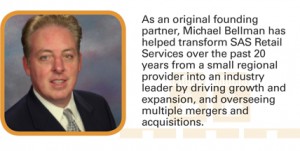
“The biggest trend we’re going to see as it relates to retail merchandising is that more and more retailers are going to take back control of shelf conditions and the environment in stores,” says Michael Bellman, President of SAS Retail Services. “As a result, decisions about which items to carry and where to place items on shelves will be more driven by analytics than by brand bias.”
As part of this, Bellman believes that more retailers will move from the older merchandising model (where suppliers employ brokers to merchandise items on retailer shelves) to a newer single source model like the one SAS Retail offers many of its retail partners. Not only does the newer model help eliminate brand bias, “it also gives retailers a more effective and efficient way to utilize existing merchandising dollars. Plus, shoppers benefit from new items getting to the shelves faster,” explains Bellman.
Bellman also predicts that “we’re going to see a shift in planograms from being supplier-driven to being more retail-driven. Retailers have the sales data, and they will increasingly use that to decide where items should be placed on the shelves and how much space they should have on their own, as opposed to allowing the supplier to dictate that. This will benefit both the retailer and consumers by providing better itemization and an improved shopping experience.”
Taking a Stand to Stand Out
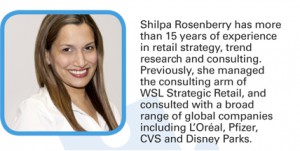
“This year was a very disruptive year in retail, and we’re expecting to continue to see major shifts in 2016,” says Shilpa Rosenberry, Senior Director of Global Consumer Strategy for Daymon Worldwide. She points to several of the key “megatrends” highlighted in Daymon Worldwide’s recently released “Global Retail Trend Predictions for 2016.”
“One trend we’re going to see is more retailers shifting their focus from value to values,” says Rosenberry. “Consumers don’t just want ‘stuff.’ They want retailers and products to align with their core values, which include functionality, sustainability, diversity and purpose. We are already starting to see this play out in big and small ways, such as Target moving to a gender-neutral toy department or Selfridges [a department store in the UK] offering a genderless clothing line.”
“We’re also going to see retailers start using ‘balance’ as a strategy,” says Rosenberry. “This stems in part from consumers not wanting to be pigeonholed into one category, as well as the extremes we’re seeing as they look to balance their digital lives with real-world experiences. For example, you might have someone who watches a 12-hour TV marathon one day, then goes out and runs a marathon the next. Retailers will increasingly offer products and services that play to this aim for balance, like indulgent mini-desserts or bite-sized comfort foods along with juice bars and cleanse programs.”
According to Rosenberry, the common theme underlying these trends is the idea of retailers honing in on what they stand for and which consumers they want to target. “Retailers can’t be everything to everyone, nor can they compete on price alone,” she explains. “They need to tailor products, services and the in-store experience to their core shoppers, while still staying true to who they are.”
Beacons Go Mainstream
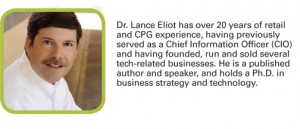
“The biggest single technology trend that will affect the retail environment in the coming year will be the rise of beacons as an increasingly accepted form of digital communication with shoppers,” says Dr. Lance Eliot, Vice President of Global IT for Interactions. “Currently, most of the retailers using beacons are doing so on a very subtle and cautious trial basis.”
Eliot explains that this is because “stores aren’t sure yet whether consumers will love or hate beacons. Consumers might come to hate them if they are perceived as overly obtrusive. Shoppers do not want to walk into a store and feel as though ‘Big Brother’ has suddenly taken hold of their smartphones. Nor do they want to constantly have their shopping experience disrupted by numerous messages and alerts telling them about special deals in the store.”
Eliot says that as more retailers introduce the technology in the coming year, the key to success will be to “use the shopper communication power of beacons judiciously. Target, for example, has wisely opted to keep its pilot use of beacons to a reasonable two messages per shopper per visit.” Moderating use like this can allow retailers to harness the advantages of beacons, while minimizing potential shopper objections.
Still, Eliot cautions that “we have to wait and see whether enough retailers will be careful with beacon use, because all it will take is a major retailer to go overboard and the entire barrel will be spoiled by that one bad apple.”
Delivering the Unexpected
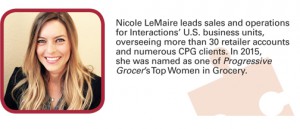
“In 2016, we’ll see more entertainment in stores,” predicts Nicole LeMaire, Vice President for Interactions. “Live music, wine tastings, specialty food sampling, live chef events—these are going to become more common as retailers incorporate more of a social environment into the retail store. This will apply not just to grocery, but also to department stores and other formats. Retail spaces will become more of a place to gather, similar to what coffee shops have become.”
LeMaire also predicts that retailers will begin to change their physical environments to help increase shopper engagement. “Stores have to become more than just vast aisles of products,” she says. “For example, we’re starting to see smaller formats, and more outdoor and European-style markets. These offer that local feel people are seeking where shopping is a social activity and in some cases like a scavenger hunt to find new and unique items.”
Ultimately, LeMaire says “it’s incumbent on retailers to find new ways to surprise and delight their shoppers. Shoppers don’t always know what they want and aren’t always going to ask for something new. But when they see something unexpected that they love, that will be an experience they will remember.”
Retail News Insider will be following these trends and more in 2016. Check out our new 2016 Market Watch calendar below for a sneak peek!
